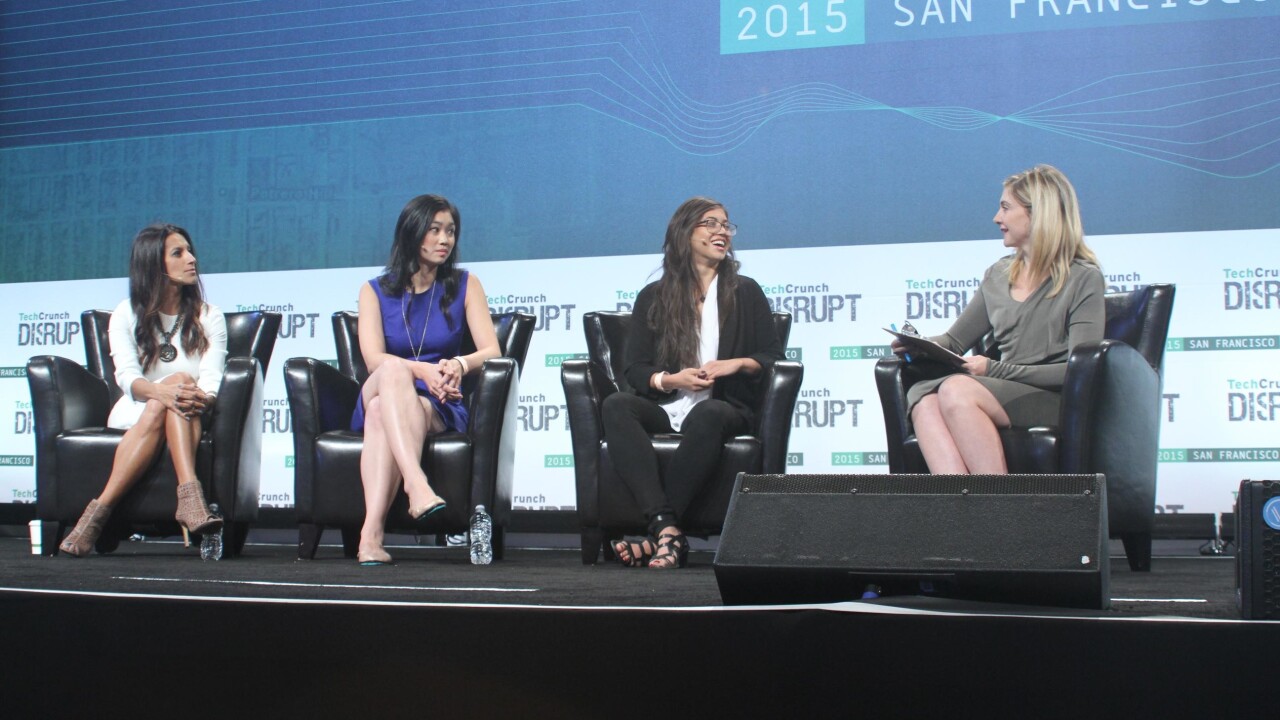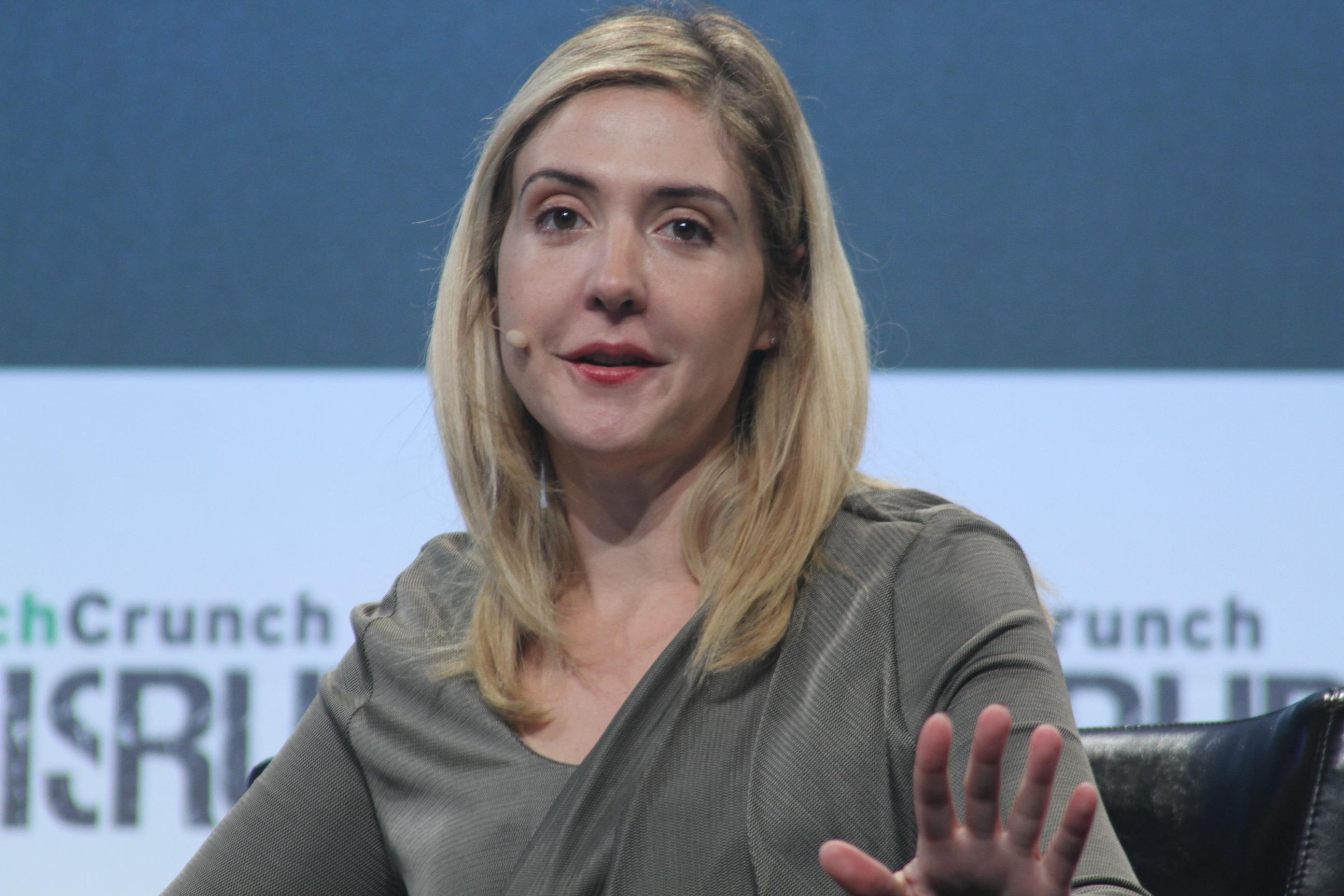
Diversity in technology, and more specifically the specter of the “Women in Tech” panel, rests on a 2D analysis of the issue at hand. Generally, the problem is reduced to a simple equation: find women, get more women, pat self on back, repeat.
But onstage in San Francisco at TechCrunch Disrupt, the token “Women in Tech” panel, moderated by former TechCrunch editor Alexia Tsotsis, was the first one the event had put on in five years.
It also did something different: it recognized that diversity cannot be forced or contained within one catch-all solution. It’s a multi-faceted issue that grows and changes with the size, shape, and age of the workforce.
It helped that the panel featured three women at distinctly different points in their careers. Sukhinder Singh Cassidy, CEO of video e-commerce platform Joyus, has spent the last year working on getting women into advisory positions with Boardlist, a resource to help investors and CEOs find qualified women for private company boards. Tracy Chou, a rising tech star in Silicon Valley and currently a software engineer at Pinterest, began a project to better analyze the true concentration of technical women in the industry. Isis Anchalee is a platform engineer at OneLogin and the catalyst behind the “#ILookLikeAnEngineer” movement, which rocketed the 22-year-old to become the new face of diversity in tech.
Three women and three different perspectives — and a reminder that as we continue the diversity in tech conversation, we can do so while holding multiple ideas in our brains at the same time. No one viewpoint will ever accurately crystallize why we need diversity in tech or how we can solve it — it’s a malleable issue that begs for multiple solutions.
How do we change it now?
Cassidy offered at least one potent answer in particular, when asked about how to change diversity company-wide on a systematic level.
“We need to make it easier for critical points in their career when they’re juggling a lot,” she said. “Even if you have a really good entry ratio, by the time you end up at the top, the numbers narrow because there are a lot of women who exit at critical periods.”
Other panels, please take note: This is how you talk to women about their perspectives on pregnancy in the workplace, and how it affects them and companies overall.
But Cassidy’s suggestion is merely one idea that tackles a specific facet of a fraction of the complex issue at hand. Certainly it seems reasonable for companies to restructure and reorganize to help women mid-career, at child-rearing periods, to continue to remain successful in their positions and offer unique perspectives. However, it’s not one-size-fits-all, and won’t magically change everything in one fell swoop.
Chou in particular stressed these unique characteristics and diversity challenges that vary from company to company. In her experience with Pinterest, she discussed the company’s willingness to look at different leverage points like salary, hiring, promotions and other actions. She also indicated that those could be different for another company of a different size or shape. But Chou indicated there’s a reason why this conversation begins with women.
“Every man has a mother. Many men have wives. Many men also have sisters and daughters, so it’s easier to relate,” Chou said.
But, Chou said, diversity does not end with women. It is only the beginning.
“I think it’s really critical that we don’t define diversity as just gender diversity or race diversity, but those are the easiest to start with and the most obvious problems we have,” she added.

Being the best, having the best
Perhaps a product of her youth, Anchalee seemed much more interested in prioritizing empathy, understanding and fluidity in company structure. She was quick to indicate that gender diversity shouldn’t ignore workers who identify with alternate genders or even no gender at all. She also offered a counterpoint to the old adage that diversity shouldn’t get in the way when finding “the best” talent.
“How do we define what the best is?” she questioned. “Ultimately, if you don’t have the network that’s actually going to be using the product?”
With years of executive experience under her belt, Cassidy had a very informed perspective on why the C-suite seems relatively blind to issues of hiring for diversity — despite the fact that studies show more diverse companies experience better returns and better revenue.
You’re only forced to be creative when things aren’t going perfectly,” she said. “But frankly, when things are up and to the right, it’s easy to not think about the harder issues.”
No one solution
The points made by these three women could hardly be considered a cohesive plan to address diversity in the technology industry — in fact, it seemed that they even conflicted at points, agreeing and disagreeing about finite issues and providing alternate pathways to embedded ways of thinking.
But in moving forward in the diversity conversation, it’s important that the community accepts and understands that competing ideas are part of the way we get to a point where we no longer need to have the token “Women in Tech” panel. Some ideas will work, and some ideas will not. The point is that we continue to move the needle forward.
“It’s still disappointing that we’re still having the same conversations thirty years later,” Chou said of the panels concerning the act of making women visible in Silicon Valley. “But I hope thirty years from now we won’t be.”
Get the TNW newsletter
Get the most important tech news in your inbox each week.




